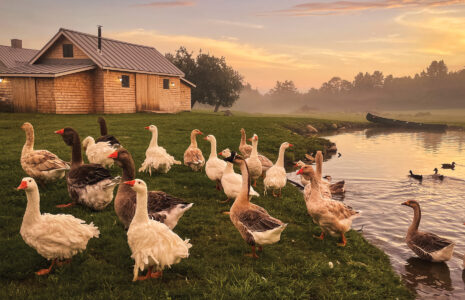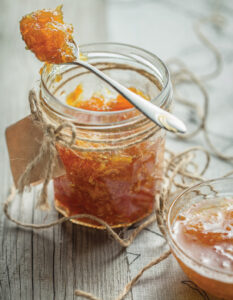How is “bird flu” transmitted from wild birds to your flock? Prevent avian flu in chickens, geese, and other poultry by taking precautions now.
In late March of 2022, hordes of migrating black ducks and mallards descended on our farm pond and departed the next day, only to be replaced by another wave. In Maine, where we live, that’s the time of year when migrating birds pass through in massive numbers. That year, the ground was still frozen, with patches of dirty snow everywhere, but ponds and rivers had opened up, and the fields were saturated with water.
I’d heard warnings circulating among the poultry community about highly pathogenic avian influenza, so when I saw the wild birds, I considered our options for protecting our flock of geese, chickens, guineas, and ducks. Unfortunately, they’d all outgrown being kept in any indoor space we had available for longer than overnight. I’d heard similar warnings about avian flu in previous years and nothing had ever come of it, so we decided to let our flock out like normal. Then, one morning, I headed out to the barn and found a goose dead in the stall. She was older and had no other symptoms, so I thought perhaps it was just age. The next day, I found a dead guinea fowl and two geese acting sluggish, their faces puffy and swollen. By the end of the week, we’d lost 10 birds.
Once I realized we might be dealing with avian flu, I began frantically searching online for advice on what to do. I locked my birds in their coop, but it was too little, too late. I agonized over the fact that some birds showed no symptoms of illness, including my first and favorite goose, who never even had a sniffle.
I finally called the Maine state veterinarian office at the end of a week of worry. As any flock owner can imagine, I didn’t want to take this step. Everything I’d read indicated one bird diagnosed with avian flu meant the whole flock would need to be culled.
Rachael Fiske, assistant state veterinarian, handled my case. First, she wanted to get the facts: How many birds had died? How many seemed ill? What symptoms were they showing? Had migratory birds been in my area?
I described our pond and the waves of migrating ducks that came every day. I described our large flock of various poultry that free-range around the pond. I told her how many birds had died and how the deceased often had heads that were so swollen that they couldn’t open their eyes. I told her no ducks had died but a few were coughing.

In this entire, miserable experience, Rachael was a ray of light. She was calm, never jumped to conclusions, and, without judgment, she walked me through what would happen and answered every question I had in detail.
First, our birds had to be tested. Nothing would proceed unless avian flu was confirmed in our flock. A technician came to our farm and took samples from sick and deceased birds. A few days later, we received a positive diagnosis. Shortly after, Rachael and her colleagues at the U.S. Department of Agriculture (USDA) arrived and culled our entire flock of geese, guinea fowl, chickens, and ducks.
I learned a lot through our devastating experience with avian flu, and as a result, I hope to be able to educate others and answer some of the more common questions surrounding the disease.
How Is “Bird Flu” Transmitted?
Avian influenza is a disease that affects wild and domestic birds infected with avian influenza A viruses. It can present in two ways: highly pathogenic and low pathogenic. Highly pathogenic viruses spread quickly and often result in death, whereas low pathogenic viruses may cause few, if any, symptoms.
The 2022 variant of avian flu (a strain of H5N1) is classified as highly pathogenic. You may have heard of strains of avian flu in other years, and if you’re wondering why the 2022 variant was so deadly, it’s because of the adaptability and aggressiveness of the virus. The 2022 virus has higher fatality rates than previous strains, and because it ravaged wild and domestic birds through the hot summer of 2022, we can assume it’s less affected by heat than previous strains. While this variant hasn’t shown serious potential for transmission to humans, it spreads from bird to bird easily through contact with feces or respiratory droplets.
Can Avian Flu Be Prevented?
Avian flu can be prevented in your flock with one simple, but sometimes impractical, strategy: Keep your birds indoors during seasonal wild bird migrations, which increase the risk of avian flu. Because the virus spreads through contact with feces and respiratory droplets, isolation is the best prevention. The vast majority of avian flu cases are transmitted by wild waterfowl, turkeys, and shorebirds. There’s little indication that songbirds transmit the virus, but it’s wise to limit exposure to them as a precaution.
If you find yourself in a position similar to mine�…–�…with a flock too large to be comfortably contained in your available housing�…–�…it may be time to consider other options. While we’re unsure of our future with poultry, we’re steadfast that we’ll never let our flock grow beyond our housing capacity again. It can be easy to overlook in times of health, but proper housing is critical not just for the prevention of avian flu, but also for quarantining new birds, preventing other illnesses, and protecting birds from predators.
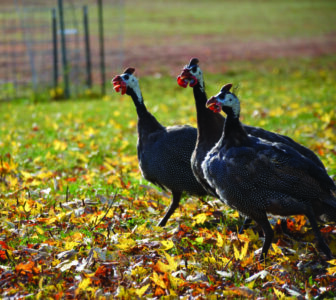
Avian flu can also be transmitted through droppings from birds migrating overhead or be carried in on the boots of a visitor or passerby. To prevent these risks, you can use a run sparingly; just make sure it’s kept clean and covered. Keep a pair of boots exclusively for farm work, and don’t wear them elsewhere. Insist on bleach baths for the shoes of any farm visitors.
Different species of bird seem to react slightly differently to the virus. Chickens and guinea fowl may show few symptoms beyond lethargy and decreased appetite, but they’ll decline extremely rapidly. They’re often deceased within 24 hours, and the flock can be completely decimated within 48 hours. Ducks and geese are sometimes affected in smaller numbers, with more of a flock carrying the virus without exhibiting severe symptoms. Waterfowl that do show symptoms will have swollen, puffy eyes and heads, they’ll often cough, and they’ll move slowly, if at all.
If you’re concerned about possible symptoms, call your state veterinarian right away to get your flock tested. If your flock tests positive, you’ll need to accept the fact that your birds will need to be culled.
Is Culling Necessary?
When talking about my experience with fellow bird farmers, there’s often a sense of resistance to the idea that the entire flock has to go. I believe this leads to hesitation in calling a veterinarian when suspicions arise about possible avian flu infection. What about birds with no symptoms? If they can live healthy lives, why not let them? The reason to cull is simple: Some birds, especially ducks, never show any symptoms. Carrying the disease while asymptomatic is how wild duck flocks are able to sweep through a farm, leaving the disease behind but not dying from it themselves.
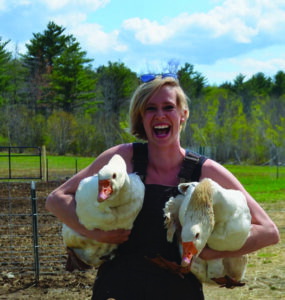
You may also hear about options for treating birds that have avian flu. While there may be treatments for the symptoms, even symptom-free birds still carry the disease once infected, and the likelihood of spreading the disease to other flocks poses a severe risk. Keeping a flock of survivors would turn your farm into a dangerous microclimate. Anyone with poultry who visited could take the virus back home to their flock, and any new birds you bring on would likely perish.
As heartbreaking as it is, culling* is the only safe option for dealing with avian flu.
The virus can live in soil and pond water for some time without a host, so the USDA requires a 150-day fallow period before allowing new birds onto a farm. It also offers compensation for birds culled, which, especially for larger-scale poultry farmers, can mean the difference between a total loss and a survivable crisis.
*The USDA culls flocks by capturing them in an enclosed room and using carbon dioxide. Experts have determined this is the most humane way.
How Is Avian Flu in Chickens Affecting Poultry Supply?
At the time I wrote this article, more than 40 million birds had died of avian flu in the United States and millions more across the world. In Europe and Canada, strict rules have been put in place regarding the indoor housing of all domestic birds. Large-scale poultry farmers have had to cope with their entire livelihood being destroyed in a single day. And it isn’t just poultry farmers’ livelihoods at stake�…–�…the destruction of poultry flocks has already affected consumer supply chains, which then drives up prices and further increases inflation. (Avian flu isn’t considered a food risk. Even if infected, properly prepared and cooked poultry and eggs won’t pass the virus to humans.)
Allowed to pass from flock to flock unchecked, not only would avian flu in chickens and other birds destroy the domestic poultry economy, it would also threaten our wild bird populations, and it has shown signs of mutating and affecting other wildlife. The fact that the 2022 strain continued to thrive in summer heat, unlike previous strains, is a terrifying concern. This could mean that living with the threat of avian flu is now an everyday reality for farmers and poultry enthusiasts in North America. In Europe, the virus has been circulating year-round in wild bird flocks for three years. In response, farmers keep their flocks indoors, which has its own set of risks, including heat stroke during the summer months.
What Does the Future of Avian Flu Look Like?
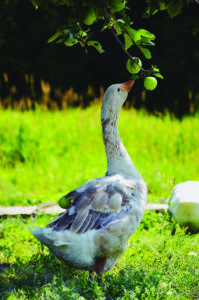
With how “bird flu” is transmitted by migratory birds, backyard flocks can be kept safe with proper precautions. Work is being done to develop a vaccine, which could ideally be administered to chicks, like the common Marek’s disease vaccine and others. The likelihood of the virus mutating to humans remains extremely low, but you should still take precautions when dealing with sick birds. Wear protective gear, and avoid close, personal contact when possible.
Take a few extra precautions to keep your birds safe, and don’t hesitate to call a veterinarian if you suspect avian flu in your flock. Always have indoor housing available for your birds, with enough space for them to be comfortable if they have to stay inside for months at a time. Maintaining your flock’s safety will do more than simply keep your own birds healthy; it will also help stop the spread of the virus, eliminating a link in the chain of contamination.
Kirsten Lie-Nielsen is an author and farmer in Liberty, Maine, where she and her husband are restoring a 200-year-old farm and raise Nigerian Dwarf goats and Babydoll sheep. She’s the author of The Modern Homesteader’s Guide to Keeping Geese and So You Want to Be a Modern Homesteader. She shares farming knowledge via her website and social media, as well as offering occasional classes. She can be found at Hostile Valley Living.

